
views
- "Traceroute" allows you to check if you're having connection issues from your network.
- Open your Command Prompt and enter "tracert [website]" with your preferred website.
- Command Prompt will reveal up to 30 different gateways for you to review.
Windows

Open Start Windows Start. Click the Windows logo in the bottom-left corner of the screen. The Start menu will pop up.

Type in command prompt. Doing this searches your computer for the Command Prompt program.
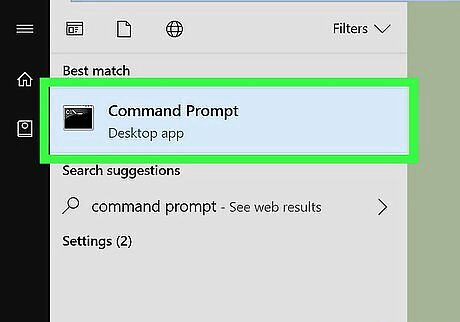
Click Windows cmd Command Prompt. It's at the top of the menu. Command Prompt will open.
Determine a website for which you want to trace the route. For example, if you want to see a list of gateways between your computer and Facebook, you would use Facebook's website.
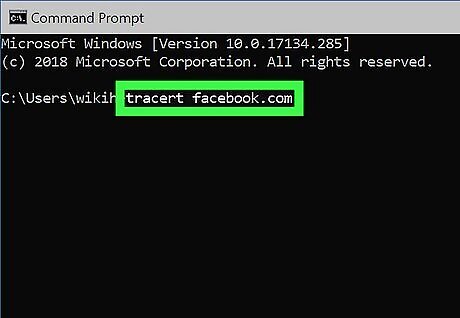
Enter the "traceroute" command. Type in tracert website.com—making sure to replace website.com with the name and extension for your preferred website (e.g., facebook.com)—and press ↵ Enter. You don't need to provide the "https://" or "www." section of the website's address. If you have the website's IP address, you can use it instead of the URL.
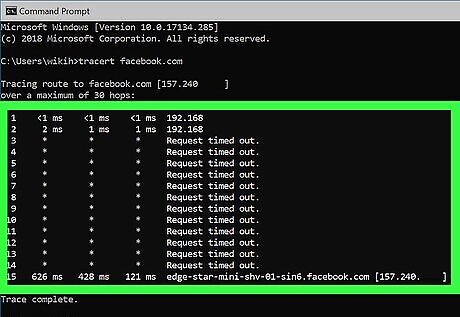
Review the results. Command Prompt will deliver up to 30 different gateways (also called "hops") through which the IP package passes. Once you see "Trace complete" appear below the list of hops, your trace has successfully run its course. If you see any blank trace entries, you can ignore them—they signify that the trace is being returned as a result rather than passing through a gateway.
macOS

Open Spotlight Mac Spotlight. Click the magnifying glass-shaped icon in the top-right corner of the screen to do so.

Type in network utility. This will search your computer for the Network Utility program.

Open Network Utility. Double-click Network Utility near the top of the search results. Doing so will prompt the Network Utility window to open.
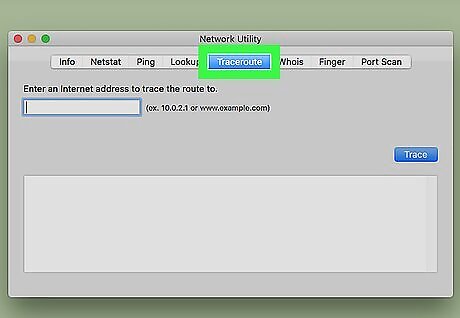
Click Traceroute. It's a tab at the top of the Network Utility window.
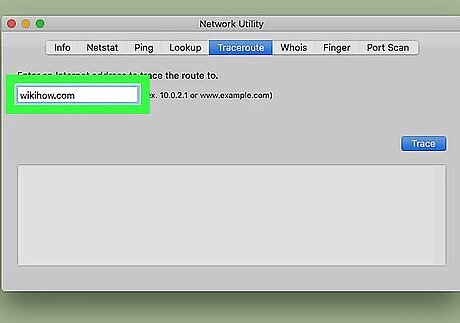
Enter a website's address. In the text box near the top of the window, type in the address (or IP address) of the website to which you want to trace a path. For example, to trace a path to wikiHow's website, you would enter wikihow.com here. You don't need to provide the "https://" or "www." section of the website's address.
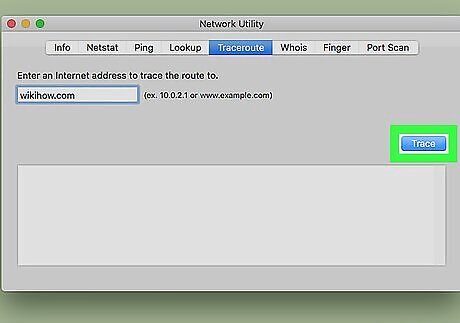
Click Trace. It's a blue button on the right side of the page. Doing so will prompt Network Utility to begin tracing the path to your selected website.
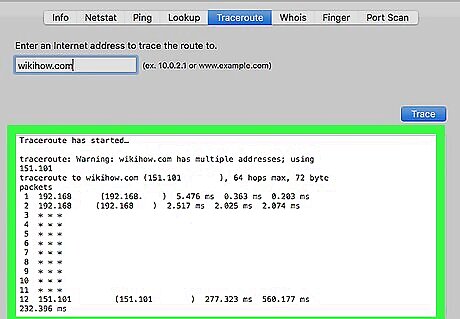
Review the results. Traceroute will bring up a list of the gateways through which your trace travels on the way to its destination. If you see any blank trace entries, you can ignore them—they signify that the trace is being returned as a result rather than passing through a gateway.
iPhone/iPad
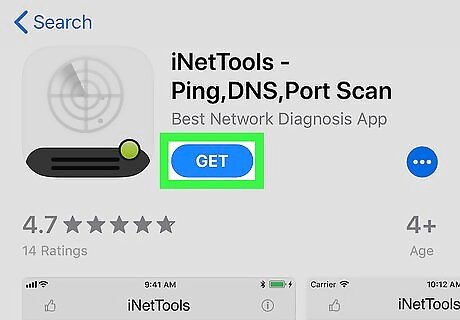
Download the iNetTools app. Skip this step if you already have iNetTools installed on your iPhone. Open the iPhone App Store Icon App Store, then do the following: Tap Search Tap the search bar. Type in inettools Tap inettools - ping,dns,port scan Tap GET next to iNetTools. Enter your Touch ID or Apple ID password.
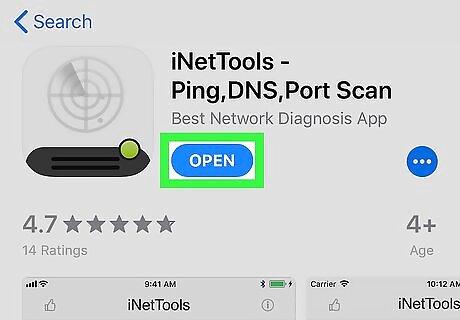
Open iNetTools. Tap OPEN in the App Store, or tap the radar display-shaped iNetTools app icon on one of your iPhone's Home Screens.
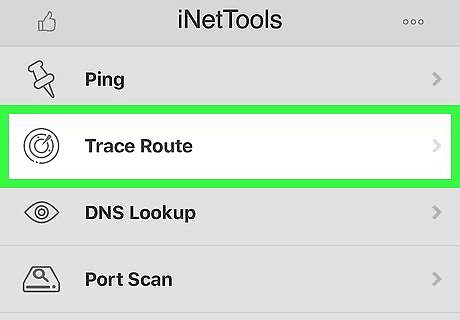
Tap Trace Route. It's in the middle of the screen.
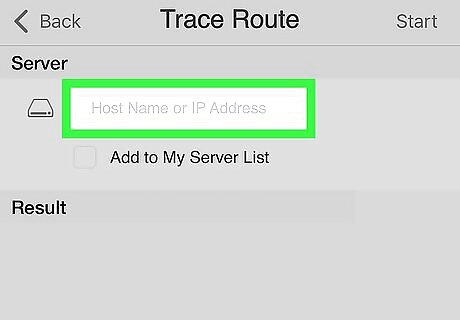
Tap the "Host Name or IP Address" text box. You'll find this option near the top of the screen. Doing so brings up your iPhone's on-screen keyboard.
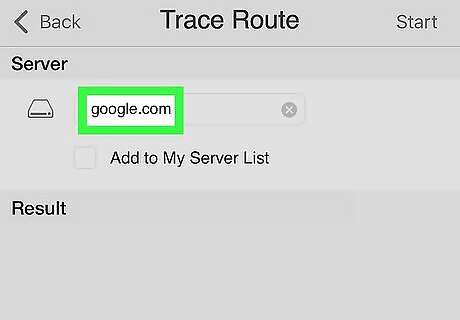
Enter a website's address. Type in the address (or IP address) of the website to which you want to trace a path. For example, to trace a path to Google's closest server, you would enter google.com here. You don't need to provide the "https://" or "www." section of the website's address.
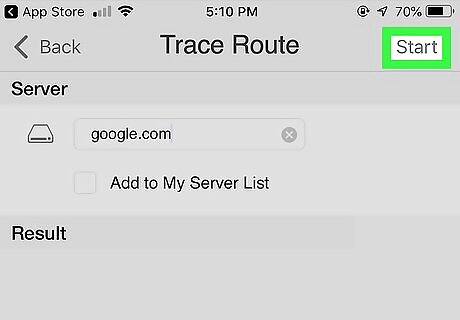
Tap Start. It's in the top-right corner of the screen. iNetTools will begin tracing a route to your specified address.

Review the results. Once the spinning wheel across from the "Result" heading disappears, you can review the address of each gateway through which your trace passed on its way to the destination. If you see any blank trace entries, you can ignore them—they signify that the trace is being returned as a result rather than passing through a gateway.
Android
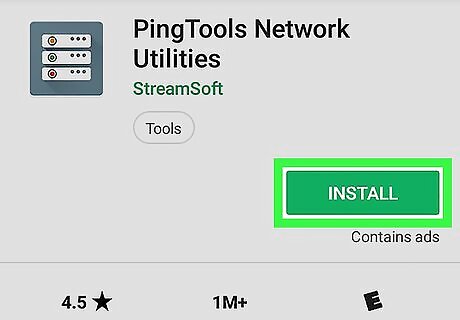
Download the PingTools app. Skip this step if you already have PingTools installed on your Android. Open the Android Google Play Google Play Store, then do the following: Tap the search bar. Type in pingtools Tap PingTools Network Utilities in the results. Tap INSTALL Tap ACCEPT when prompted.
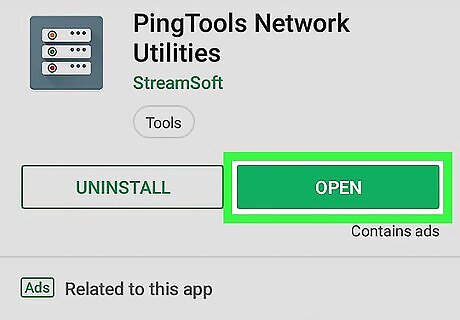
Open PingTools. Tap OPEN in the Google Play Store, or tap the PingTools app icon in your Android's App Drawer.

Tap ACCEPT when prompted. Doing so agrees to PingTools' terms of use and opens the app. If you've opened PingTools before, you might be able to skip this step.
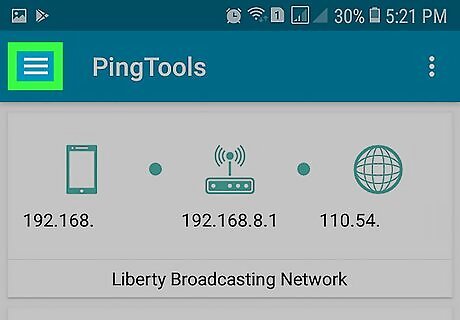
Tap ☰. It's in the top-left corner of the screen. A pop-out menu will appear.
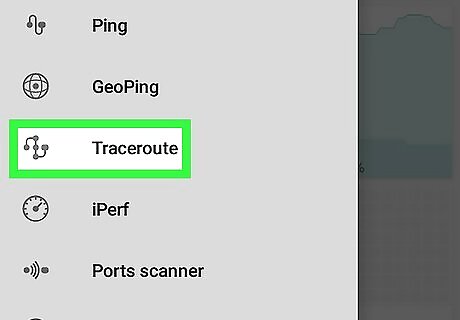
Tap Traceroute. This option is in the middle of the pop-out menu.
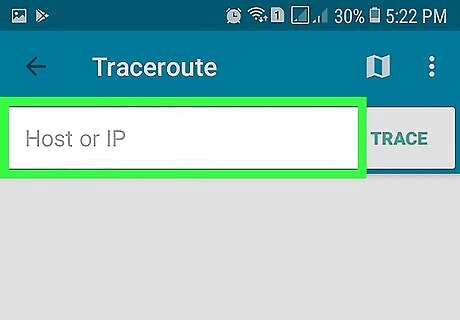
Tap the text box. It's at the top of the screen. Doing so will bring up your Android's on-screen keyboard. If a website's address is already in this text box, remove it before proceeding.

Enter a website's address. Type in the address (or IP address) of the website to which you want to trace a path. For example, to trace a path to Twitter's closest server, you would enter twitter.com here. You don't need to provide the "https://" or "www." section of the website's address.

Tap TRACE. It's in the top-right corner of the screen. Doing so will prompt PingTools to begin tracing a route to your selected address.
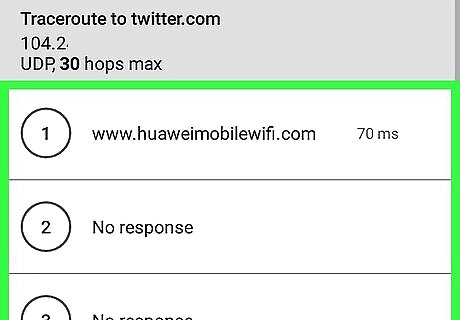
Review the results. Once the trace is complete, you can review the address of each gateway through which your trace passed on its way to the destination. If you see any blank trace entries, you can ignore them—they signify that the trace is being returned as a result rather than passing through a gateway.
Linux

Open Terminal. This step will vary depending on your version of Linux, but most distributions will require you to open the Menu and then select Mac Terminal Terminal from the list of programs. You can also press Alt+Ctrl+T to open Terminal on most Linux distributions.
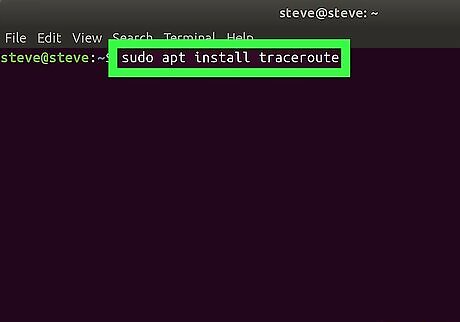
Install Traceroute. To do so: Type in sudo apt install traceroute and press ↵ Enter. Type in your password and press ↵ Enter. Type y and press ↵ Enter if prompted. Wait for Traceroute to install.
Determine a website for which you want to trace the route. For example, if you want to see a list of gateways between your computer and YouTube, you would use YouTube's website.

Enter the "traceroute" command. Type in traceroute website.com—making sure to replace website.com with the name and extension for your preferred website (e.g., youtube.com)—and press ↵ Enter. You don't need to provide the "https://" or "www." section of the website's address. If you have the website's IP address, you can use it instead of the URL.
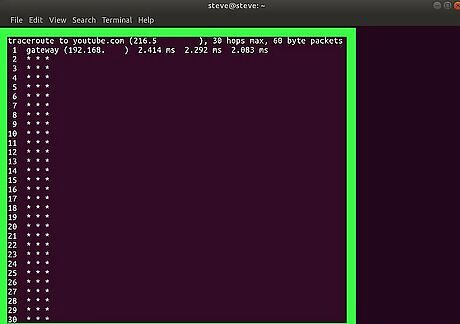
Review the results. Once the trace is complete, you can review the address of each gateway through which your trace passed on its way to the destination. If you see any blank trace entries, you can ignore them—they signify that the trace is being returned as a result rather than passing through a gateway.


















Comments
0 comment